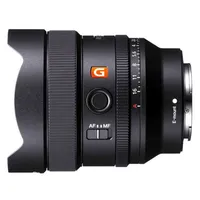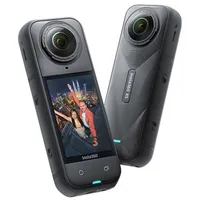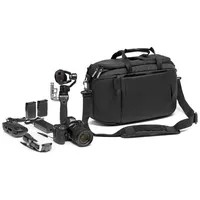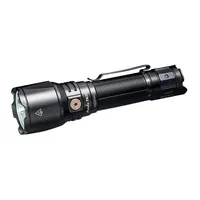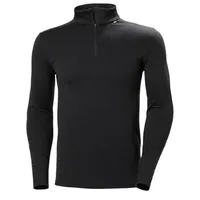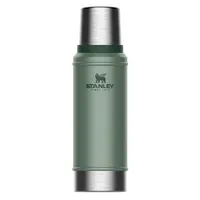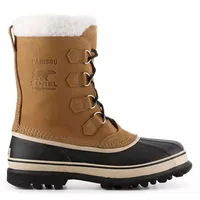I'm a northern lights-chasing expert and these are 10 things I think you need for your next expedition
If you’re chasing aurora in freezing conditions, you’re going to need more than just a sense of adventure; staying warm and having the right gear will help you capture the aurora borealis and australis without issue.

Have you seen the northern lights yet? There are two ways to approach aurora-hunting — you either wait for a rare, strong geomagnetic storm to bring a display to you, or you travel north to the Arctic Circle. Either way, September to March is aurora season in the Northern Hemisphere, but you need to do more than watch the NOAA forecast and/or travel north to see and photograph the northern lights successfully. Although smartphones are now an excellent tool for capturing auroras, keeping them steady is crucial because long exposures are essential. What’s more, the phenomenon occurs during dark, cold nights, which brings challenges — from being able to safely operate a camera and move around in the dark to staying warm and hydrated while the aurora dances in front of you.
Here are 10 things that actually make a difference on an aurora-chasing trip, so you can see and enjoy the best the night sky has to offer. Here’s everything you need for your next aurora chase.
Although you can use whatever lens you have available, the wider and faster it is, the better your Northern Lights images will be. This 14mm lens from Sigma is heavy at 1.6 lbs / 725 g, but it’s worth its weight when hunting the aurora. It's easily able to image a vast aurora-filled sky and, with an aperture of f1.8, create great images during the dark skies of a new moon — when the savvy aurora-chaser is in situ.
Read more: Sigma 14mm f/1.4 DG DN Art lens review
If you own a Sony mirrorless camera and want the best lens around for aurora photography (and astrophotography in general), this 14mm prime lens is what you want. Using the Sony E-mount, it’s fixed focus, and its aperture goes all the way to f1.8 — enough to catch even the faintest of auroras on the darkest of nights. At 1.01 lbs (460 g), it’s also relatively lightweight.
Read more: Sony FE 14mm f/1.8 G Master
Although a full-frame camera remains the best way to capture the Northern Lights, newer 360-degree cameras are becoming increasingly hard to ignore for aurora photography. With 8K 360 stills, the Insta360 X5 can take long-exposure stills (around 10 seconds at ISO 1600 using its low-light PureShot mode), which produce colorful, immersive all-sky aurora images. There’s also an excellent time-lapse mode and editing options galore.
When you’re working in the dark, you need a camera bag that’s easy to access and versatile enough to store an extra layer, snacks and drinks. The Manfrotto Advanced Hybrid Backpack III is water-resistant, allowing it to be placed on the ground or on the hood of a car and opened in the dark without needing a light. Able to take two lenses, a tripod and a 14-inch laptop, it’s got just what an aurora photographer needs.
You’re out with a group during new moon, hunting the Northern Lights, but you don’t know your camera very well and need to switch on a light. Go for it — but know that it will annoy everyone around you, particularly those taking photos. Make it a red light, which will, at the very least, prevent everyone from losing their night vision. Just 5.9 inches (15cm) long, this flashlight features a 150-lumen red light mode and weighs 5.54 ounces (157g).
Read more: Best flashlights 2025: essential for stargazing and night trekking
Whether you intend to image the Northern Lights with a manual mirrorless or DSLR camera, or a smartphone, you’re going to need some support. At 3.44 lbs / 2.81 lbs (1.56 kg / 1.27 kg) for aluminum/carbon fiber variants, this tripod from Peak Design is lightweight. However, it’s also suitable for both cameras and phones thanks to its Arca-Swiss fixings and foldable, pocket-sized universal phone holder that clips into the inside of one of the tripod’s legs.
Read more: Peak Design Travel Tripod review
The Northern Lights occur most reliably over some of the coldest places on Earth, and imaging them means standing still for a long time. That means you need to wrap up really warm. The ideal place to start is with a warm, sweat-wicking, breathable base layer like Helly-Hansen’s LIFA Merino Midweight Half-Zip, which uses 57% merino wool and 43% polypropylene in two layers (the outer layer 100% merino) to keep you toasty warm — but also dry — when you’re out in icy-cold nights.
If there’s one part of your body that will suffer when trying to photograph the Northern Lights, it’s your fingers. The Simond MT900 gloves help prevent that, not just by having touch-sensitive fingers, but also by having small hoods that can turn them from fingerless gloves to full mitts in seconds. With magnetic fixings on the finger goods, it’s possible to protect your fingers for valuable seconds during long exposures.
When you’re chasing the aurora, remaining warm enough isn’t just about being comfortable — it’s about being able to survive outside when a substorm kicks off, instead of having to retreat to a bus or cabin. Ignore the plethora of smaller, more modern and better-looking designs that often overcomplicate things and underperform by opting for the Stanley Classic Legendary Thermal Flask, which keeps 750ml liquid hot for 20 hours. A warm drink = more patience = more aurora.
Photographing the Northern Lights doesn’t typically involve much hiking — it’s mostly standing around waiting while looking at apps on phones, or using phones and cameras to take images. Either way, it can mean cold feet. So go for insulated winter boots like the Sorel Caribou, which will keep your feet dry and warm down to -40 degrees Fahrenheit/Celsius. Leave room for thick socks (tight boots = cold toes).
Summary
You’re now ready for whatever the northern lights put you through. Without these and similar products in your aurora arsenal, you’ll get cold, lose confidence and come back with underwhelming images. For more in-depth advice on photography gear, see our articles about the best camera phones for astrophotography, best cameras for astrophotography, best lenses for astrophotography and best wide-angle camera lenses.
Breaking space news, the latest updates on rocket launches, skywatching events and more!

Jamie is an experienced science, technology and travel journalist and stargazer who writes about exploring the night sky, solar and lunar eclipses, moon-gazing, astro-travel, astronomy and space exploration. He is the editor of WhenIsTheNextEclipse.com and author of A Stargazing Program For Beginners, and is a senior contributor at Forbes. His special skill is turning tech-babble into plain English.
You must confirm your public display name before commenting
Please logout and then login again, you will then be prompted to enter your display name.

